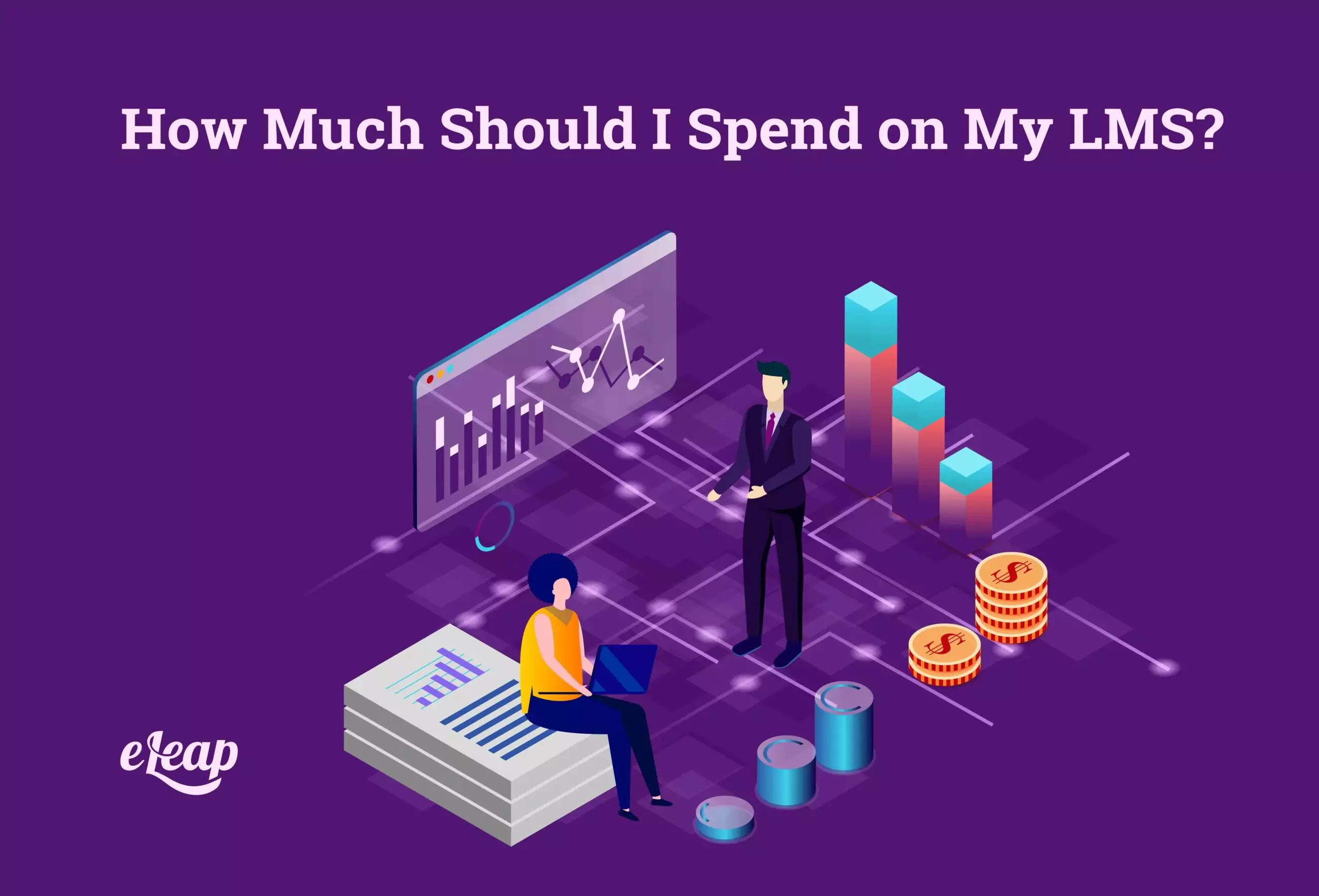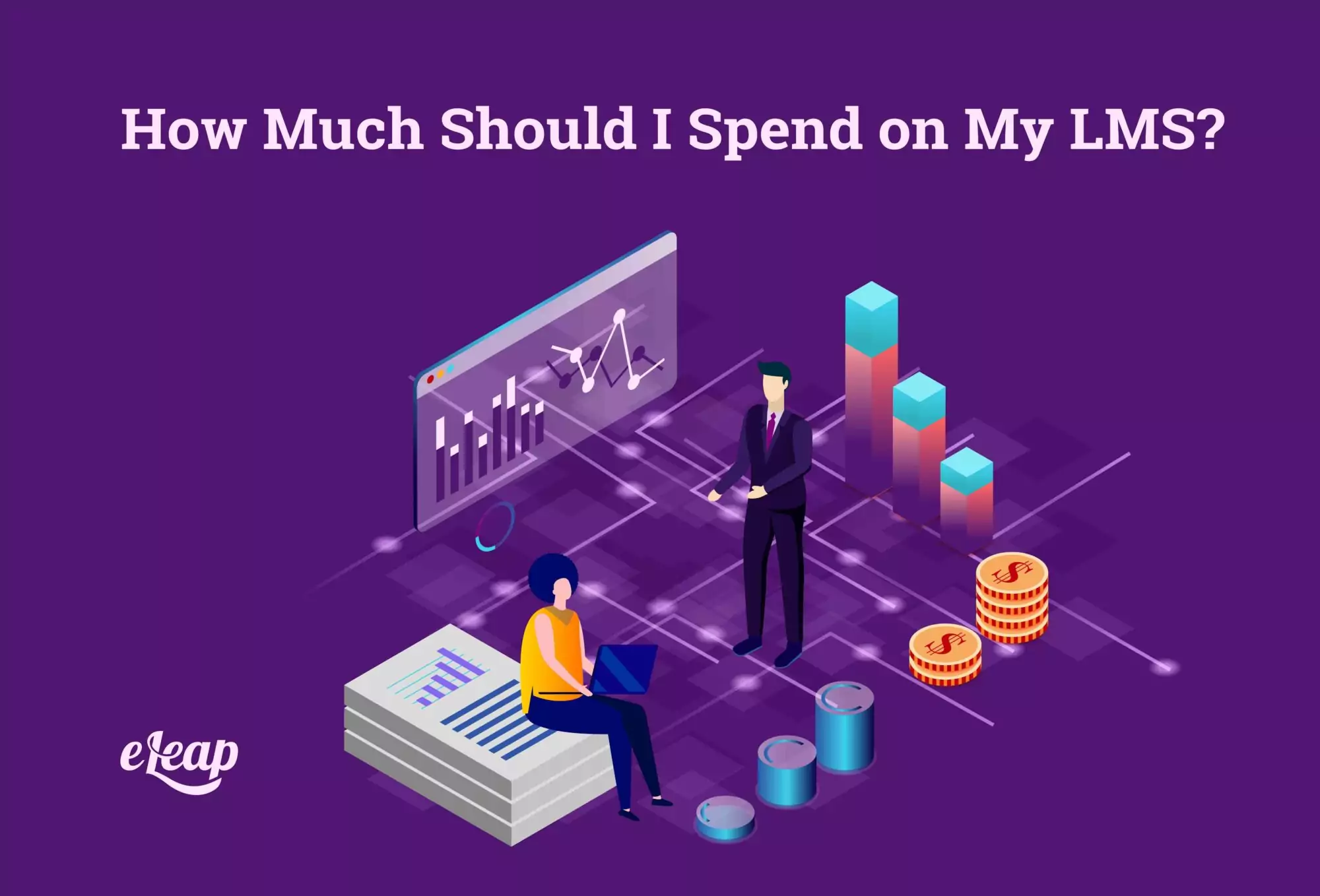How Much Should I Spend on My LMS?

Training and development are at the core of every business today. After all, if employees cannot be properly developed and trained in their roles, they may struggle, feel uninformed and underprepared, and uncertain about whether they can truly afford the LMS that they need. A learning management system is a must for companies today that want to stay ahead of the competition and keep employees properly trained and educated at all times. A personalized, robust LMS can be the difference between how effective your training is and how much your people actually retain and use.
Of course, anytime there’s a discussion of new technology, there is also the million-dollar question: how much does it cost? And don’t forget it’s friend: what should I spend?
If you have learned anything over the years in business, you should know that there are no straightforward answers here. You can ask people all day long what they think, and it will ultimately come down to a matter of what your business needs. If your organization needs a dynamic, customized LMS that handles enterprise-level operations and development, you’ll probably spend more than someone who can use a basic open-source LMS until they’ve got the means to invest in something a little more customized to their needs.

Monthly Pricing
Typically, the cost of an LMS is determined by how many users you have and what tier, or package, you choose to use from the LMS provider. Every provider has its own rates ranging anywhere between $3 to $10 per user, per month, or more depending on the number of users, as well as the features that you need.
In some cases, there are discounts offered for those who pay a year in advance, or who sign up for a longer-term commitment than just going month-to-month on the billing. Consider the pricing and packages to see what you get each month, as well as whether it’s a flat rate bill or it makes you pay for each user that you have. There isn’t necessarily one option that’s better than the other, but it’s important to be prepared so you know what to expect.
It’s More about What You Get for the Money
Instead of focusing on the bottom line cost of the LMS, organizations should be looking at this like any other investment—what are they getting from the relationship? How much benefit will come from the LMS platform that you choose? Will it meet the initiatives and goals of the organization and align with the company’s needs? Take the time to find an LMS that delivers these things.
Look for a feature-rich platform with robust customization options, too. That might not seem important now, but once you get into the LMS and start putting it to work for your organization, you’ll quickly see that this system is one that you should’ve adopted years ago. But then, this system wasn’t nearly where it is today even five years ago, so if you’re just getting on board, you can still get back on track to keep up with the competition.
Sizing Up Your LMS Options
Now that you know more about the reality of LMS pricing and how varied it can be, you’ll have a much better idea of how to look at the options available to you and find the one that fits best. Take the time to compare the scalability of the platform, as well as what features it offers, how agile it is, and whether it integrates with your existing software and tools, including your PMS.
You should spend enough on your LMS so that you get the solution that you need. That basically means that you can go ahead and find the one that best suits your needs, but make sure that you know about all of the potential costs involved, including the hidden ones. Look at how much the platform can be customized and if it can scale and grow with the business (in both directions).
There are often recurring costs that come with setting up and implementing an LMS, including hosting and security certificates, administrators, eLearning developers, and more. You can even find systems that come with a full support team and developers to get help creating eLearning materials.
The Price of Transparency
Ultimately, as with most things today, companies are going to want to focus on working with a reputable LMS provider, first and foremost. That includes someone who offers transparent pricing information and up-front costs with no hidden fees or potential “surprise” expenses that come up after the fact. They’ll also be the first ones to tell organizations that the initial cost of the LMS isn’t their only concern—they want to make sure that the ongoing costs are considered and that they are prepared for what will be getting spent on all the various aspects of the LMS, including things like IT outsourcing and making the switch to a custom-built LMS that delivers all of the solutions that the company needs. The great news is that when you find this transparency, you’ll see that it’s much easier to get along with potential clients and customers because you can be transparent with them, too.
Some companies still swear that custom quotes are the way to go, but that’s going to cost valuable points and even irreparable damage. It might be the right idea, but they should still be able to offer at least a small idea of how much it will cost to invest in their LMS based on your needs and the features that you choose. What you spend on your LMS depends on what you need, what you’re willing to invest, and how much of a budget you have to work with.
If you are tired of worrying about the “shoulds,” and ready to focus on delivering an effective product your employees will appreciate, take advantage of eLeaP’s 30 day free trial to see how it will work for you. Here at eLeaP, we can provide you with the resources and solutions to improve your employee training program and garner your results. Contact us today for a free consultation.